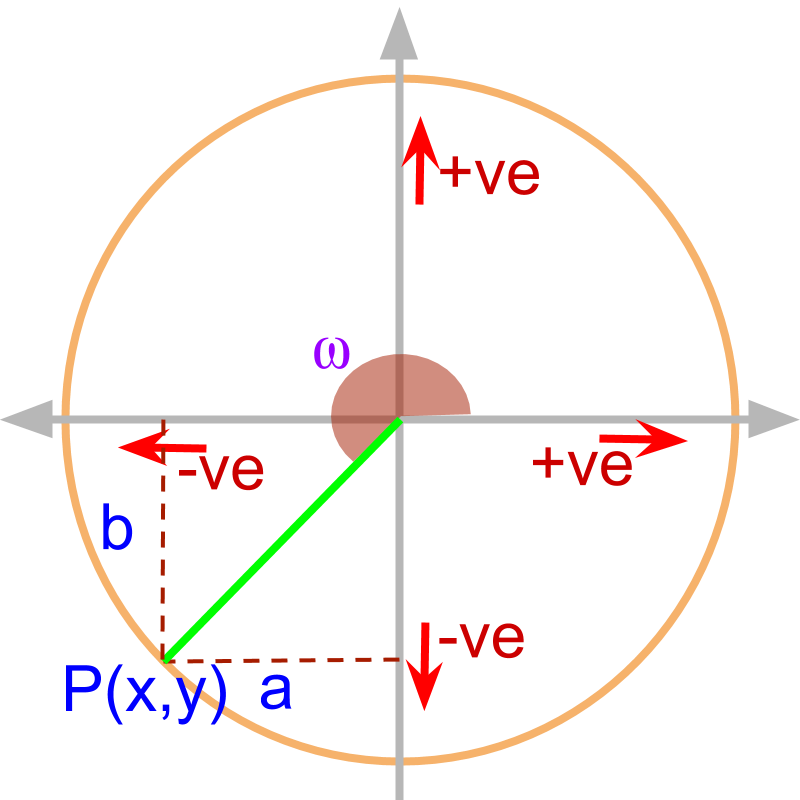
what you'll learn...
Trigonometric Values : First Principles
» The angle is measured from positive x-axis
→ x and y coordinates takes sign.
Quickly follow the sign of x and y projections to find sign of trigonometric values. No need to memorize.
 » is in the second quadrant
» is in the second quadrant
→ -ve x projection
→ +ve y projection
» is in third quadrant
→ -ve: both x and y projections
» is in fourth quadrant
→ +ve x projection
→ -ve y projection
second quadrant

The angle is shown in the figure. The magnitude of projections on x axis and y axis is given as and .
It is noted that the projection along axis is and so
.
The trigonometric ratios are computed from the x and y axis projections.
Note that the projections are given for point on unit circle. so .
third quadrant

The angle is shown in the figure. The magnitude of projections on x axis and y axis is given as a and b.
Considering the projections along x axis and y axis as and ,
Note that the sign of the numerator and denominator provide information as to if the angle is in first quadrant or 3rd quadrant.
The trigonometric ratios are computed from the x and y axis projections.
Note that the projections are given for point on unit circle. so .
third quadrant

The angle is negative and is shown in the figure. The magnitude of projections on x axis and y axis is given as a and b.
Considering the projections on x axis and y axis as and ,
The trigonometric ratios are computed from the x and y axis projections.
Note that the projections are given for point on unit circle. so .
large angle

The angle omega equals is shown in the figure. The magnitude of projections on x axis and y axis is given as a and b.
The trigonometric ratios are computed from the x and y axis projections.
For any angle the trigonometric values are computed using the projections of point on unit circle at the given angle on to x and y axis.
summary
First Principles to find Trigonometric Ratios for any Angle: For the given angle, find the projections of point on unit circle at the given angle on to x and y axes. The projections are signed values. The trigonometric ratios are computed as
•
•
•
Outline
It is advised to do the firmfunda version of "basics of Trigonometry" course before doing this.
The outline of material to learn "Advanced Trigonometry" is as follows.
Note: go to detailed outline of Advanced Trigonometry
→ Unit Circle form of Trigonmetric Values
→ Trigonometric Values in all Quadrants
→ Trigonometric Values or any Angles : First Principles
→ Understanding Trigonometric Values in First Quadrant
→ Trigonometric Values in First Quadrant
→ Trigonometric Values of Compound Angles: Geometrical Proof
→ Trigonometric Values of Compound Angles: Algebraic Proof
→ Trigonometric Values of Compound Angles: tan cot
→ Trigonometric Values of Compound Angles: more results